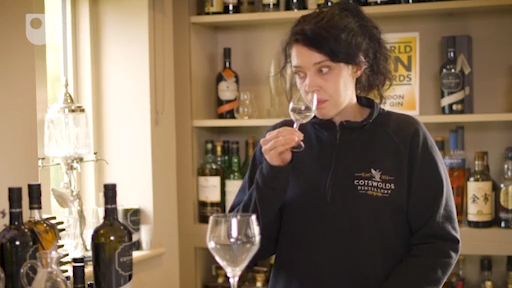6.2 Producing the final gin – the final taste
The hearts, which are at 83% ABV, are then rested for five days to allow the various flavours to come together and settle. The very last stage in the gin production process is to reduce the alcohol content. To do this, filtered water is added to reduce the strength to the Cotswold Distillery-desired ABV of 46%. The gin is then bottled in-house at the distillery.
Commercially, this is known as ‘single-shot distillation’ and results in the best possible flavour and quality of the final product. Some larger-scale distilleries produce gin for the mass market by adding more neutral grain spirit to the distilled batch to increase the number of bottles made from each run.
Some gin distilleries chill-filter their gin in order to remove oils and esters to make sure the gin stays crystal clear. The Cotswold Distillery leaves their gin unfiltered as they believe that this imparts a specific flavour into their gin. In this next video from the distillery, Sarah MacLellan describes how the Cotswold Distillery aims to produce a gin that can be taken neat, without the need for any additional mixers.

Transcript
According to the Cotswold Distillery, why can their gin be drunk neat without the need for any mixer?
The high purity of the raw starting materials used in the Cotswold gin means that higher quality spirits can be made which do not require a mixer.
